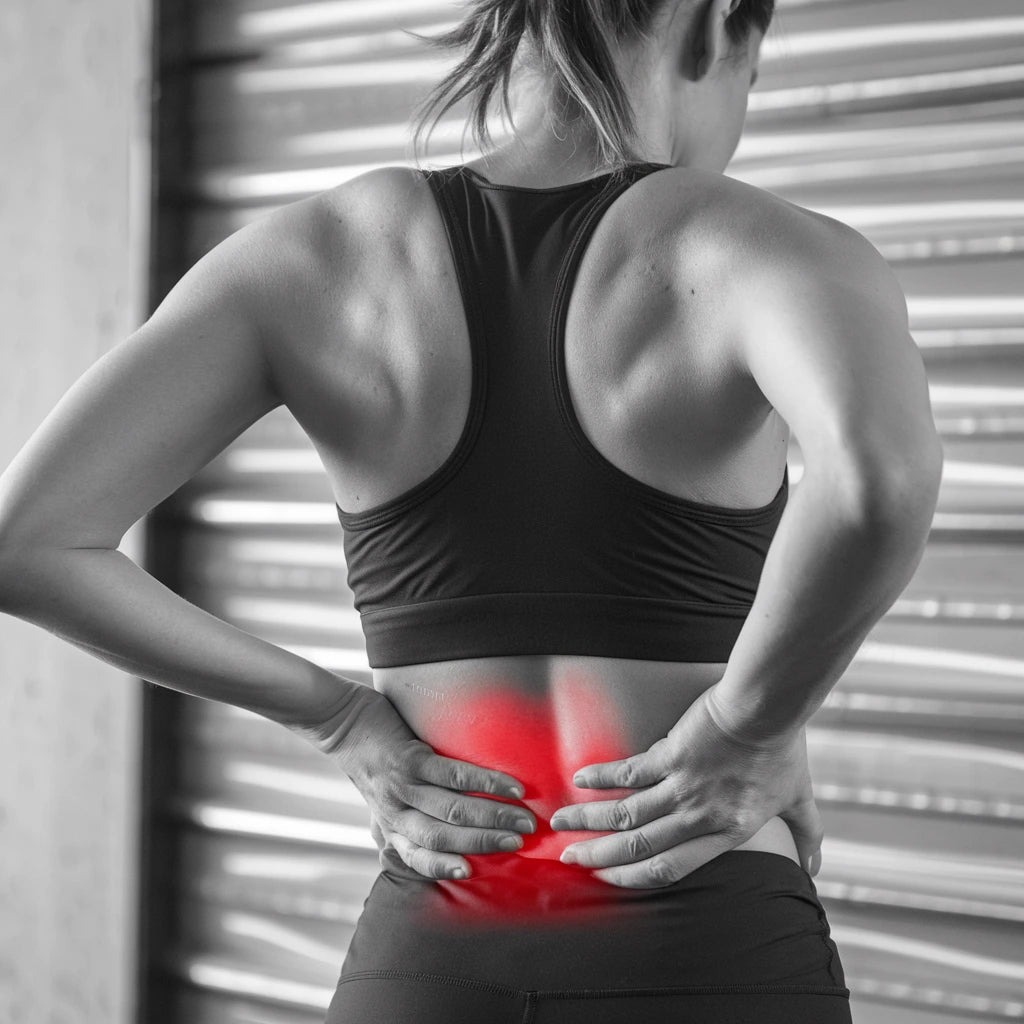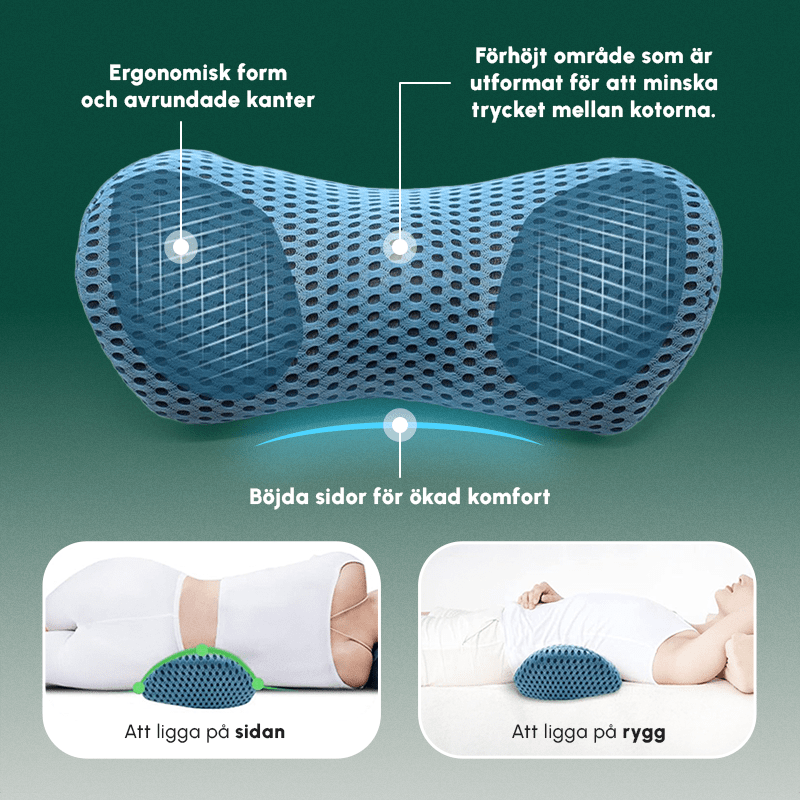Lower Back Pain: Symptoms, Causes, and Treatment

Low back pain is a common problem that can significantly impact your quality of life. This article reviews the most common symptoms, causes, and treatment options for low back pain.
What is low back pain?
Low back pain is pain in the lower back. It can be caused by overuse, poor posture or injury and can cause stiffness and limited mobility. Rest, stretching and physiotherapy can help relieve the discomfort. Back pain in this region is sometimes called lumbago or backache and affects up to 80% of the population at some point in their lives. The pain can range from mild to severe and can affect the area between the lowest ribs and the lower part of the hips. In some cases, it involves the treatment of backache .
Symptoms of low back pain
Common symptoms include:
- Pain or ache in the lower back
- Stiffness and limited mobility
- Stabbing or grinding pain, especially on the left side
- Increased pain with certain movements or positions
- Difficulty sleeping due to pain
Low back pain on one side is a common symptom that may indicate muscle tension or problems with the vertebrae on the affected side. Sometimes back pain can also radiate down the thighs or hips. In some cases, low back pain and stomach pain can occur at the same time, which can be a sign that internal organs are affected. If the pain worsens with low back pain when walking, it may indicate problems with the discs or joints in the spine. A condition such as a herniated disc in the back may also be behind it.
Causes of low back pain
Several factors can contribute to lower back pain:
- Improper lifting or overloading
- Poor posture or prolonged sitting
- Inflammation in muscles or joints
- Herniated disc or other back problems
- Stress and tension
Lower back pain while running is common among runners and can be caused by overuse, poor running technique, or weak core muscles. Too much lordosis in the lower back can also cause pain. In some cases, sciatica can be the cause of back pain, where the nerves that run from the lower back down through the thighs become irritated.
Diagnosis and treatment of lower back pain
Lower back pain is a common problem that can be caused by sedentary work, poor posture, overexertion, or damage to muscles and joints.
Treatment aims to reduce pain, improve mobility, and strengthen the muscles that support the spine.
Rest and relief
Short periods of rest can relieve acute pain and reduce strain on the lower back, but prolonged inactivity should be avoided.
Advantage of the Comfort Pillow: Provides support and relief during sleep and rest, contributing to better recovery.
Physical therapy
Regular exercises that strengthen the core and back muscles improve stability and reduce the risk of recurring pain.
Advantages of the Comfort Pillow: Complements training and rehabilitation by supporting the lower back during rest.
Pain relief
Anti-inflammatory drugs can be used temporarily as needed to reduce inflammation and pain.
Massage or manual therapy can also be effective in relieving muscle tension.
Advantage of the ComfortCushion: Can reduce the need for painkillers through natural relief.
Heat therapy
Heat treatment increases blood circulation, relieves stiffness, and promotes relaxation in the back muscles.
Advantage of the ComfortCushion: Can be used together with a heating pad for optimal relief.
Recommended treatment
The treatment of lower back pain depends on the cause and severity.
Physical activity and specific exercises are recommended to strengthen muscles and improve posture.
In cases of acute back pain, such as lumbago, rest may be necessary for a short period, but movement is generally encouraged to avoid stiffness and muscle weakness.

How the Comfort Pillow can help with lower back pain
The Comfort Pillow offers several benefits for people with lower back pain:
- Provides optimal support and relief for the lower back during sleep
- Helps maintain a correct sleeping position
- May reduce pain and discomfort during the night
- Improves sleep quality, which promotes healing and recovery
- Can be used in different positions for maximum comfort
For people with lower back and hip pain, the Comfort Pillow can be particularly valuable, as it helps keep the spine in a neutral position during sleep and reduces strain on both the back and hips. In cases of nerve involvement, nerve pain in the back is also a possible diagnosis to consider.
Buy nowConclusion
Low back pain is a common problem that can have many different causes. By identifying the cause and using appropriate treatment methods, including supportive devices such as the Comfort Pillow, many people can effectively manage their symptoms and improve their quality of life. It is important to listen to your body's signals and seek professional help if the pain is persistent or worsens.
For long-term or recurring back pain, a combination of treatment methods may be most effective. Lower back pain exercises to strengthen the back and core muscles, along with good ergonomics in everyday life and supportive aids such as the Comfort Pillow, can help prevent future problems and reduce the risk of acute pain developing into chronic problems. For some, morning back pain may also indicate that it is time to review your sleeping position and mattress.
Frequently Asked Questions (FAQ)
How long does low back pain usually last?
Acute pain usually lasts up to six weeks, while chronic pain can last longer than three months.
Can I exercise with lower back pain?
Light exercise and specific exercises can often be beneficial, but consult a physical therapist for a customized program.
How can I prevent lower back pain when lifting?
Use proper lifting technique, bend your knees and keep your back straight. Avoid twisting your body while lifting.
Is it normal to have lower back pain when sleeping?
Pain during sleep may indicate an underlying cause. Use the Comfort Pillow for better support and consult a doctor if the problem persists.
When should I seek medical attention for lower back pain?
Seek medical attention if the pain is persistent, intense, or if you experience other symptoms such as numbness or weakness in your legs.

